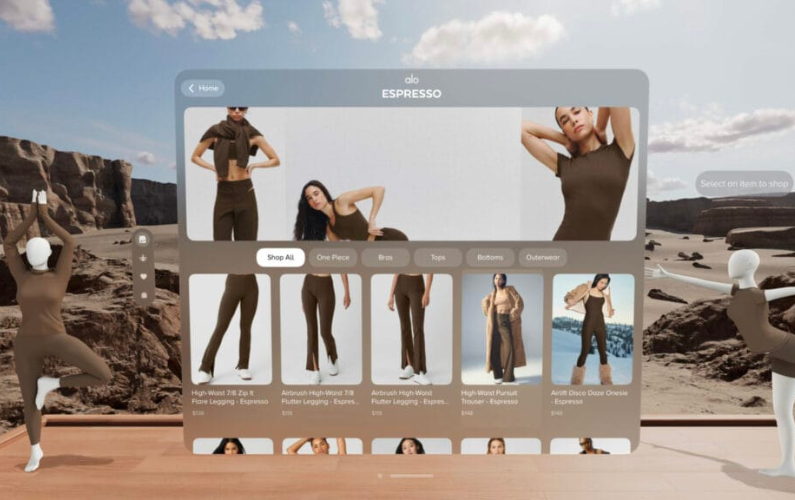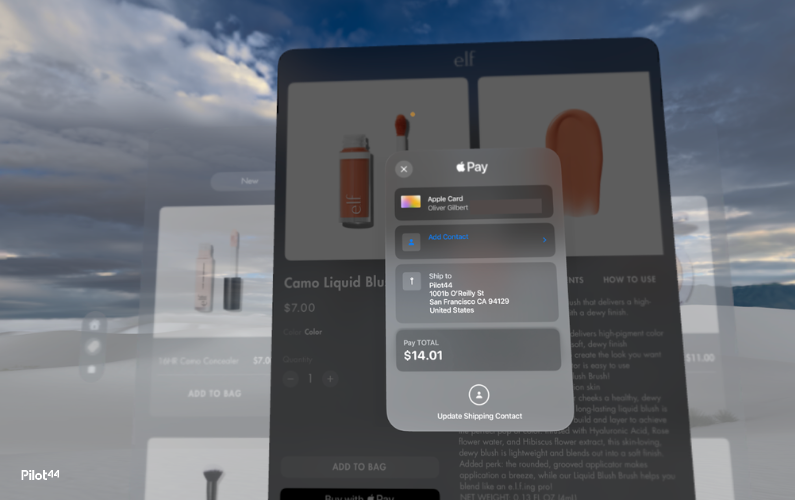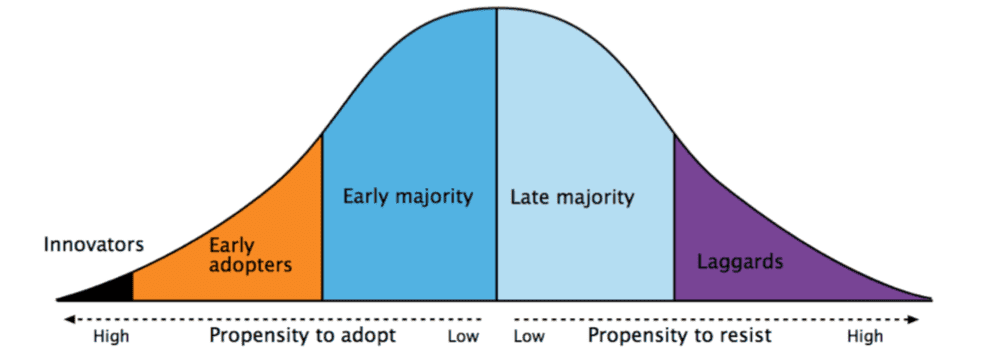Early reviews of the Apple Vision Pro largely focus on its consumer appeal, app functionality, and cultural acceptance of wearing high-end virtual reality goggles. But beyond mere advertising stunts, the Vision Pro offers so much more opportunities for brands.
One exciting, yet underexplored area is the potential for consumer-facing brands to leverage Vision Pro and similar VR/AR platforms to drive significant commercial impact.
The capabilities provided by Vision Pro mark just the beginning of how companies can enhance brand growth, foster deeper customer engagement, explore new commercial opportunities, and build large-scale communities.
Ready to discover how your brand can thrive in this new digital era? Let's dive into the dynamic possibilities that Vision Pro offers:
1. Epic Interactive Brand Experiences
Vision Pro’s range of passthrough modes, eye tracking and hand tracking can feel magical. These capabilities naturally lend themselves to brand storytelling mechanics that aren’t possible in other digital or physical settings.
But, integrating technology to chase hype trends, rather than to serve a need, often results in inauthentic, distracting, or clumsy product experiences. Brands should study these new capabilities to identify where they can complement their own storytelling.
The Lego Builder Journey app is a puzzle game that masterfully executes this dynamic. Players help Lego characters navigate through 3D puzzles by picking up and building with Lego bricks. The mechanics are extensions of how you’d interact with Lego in real life.
It’s easy to imagine how this experience can help consumers engage with Lego characters and then spend more on physical or virtual Lego products.
2. Building New Worlds for Discovery
The Vision Pro offers a step change for engaging with customers. It would be a shame to use this opportunity only on banner ads, pop-ups, and other dystopian holographic spam from Minority Report.
Brands can use these interactive capabilities to transport audiences to new places, build appreciation through authentically interesting educational content, and facilitate product discovery.
Diageo’s upcoming Don Julio tequila experience in Vision Pro which brings users to Mexico to learn about tequila production is an example of how this emerging technology can deliver rich experiences that may otherwise be difficult to replicate at scale in real or 2D mediums.
3. Opening Doors to the Perfect Store
Many companies have tried with varying degrees of success to implement a physical retail strategy. This is particularly true for multiple recent DTC companies that are recalibrating their offline store strategy.
The Vision Pro can enable brands to develop a perfect store, unrestricted by realistic limitations.
Alo Yoga is an early example of this concept. Their virtual experience aspires to feel more like an outdoor yoga retreat than an Amazon page.
Weaving together AI-enabled 1:1 concierge assistants, personalized preferences, and unique visual and audio design will only deliver even more interactive experiences to consumers.

"Alo Sanctuary" combines high-definition, hyper-realistic meditation environments with shopping, allowing users to buy Alo Yoga products in virtual settings like beaches and mountains. It features life-size mannequins for product interaction, simulating an in-store shopping experience. The app represents a significant advancement in integrating wellness with retail in virtual reality. [Image source: Obsess]
4. Cashing In on Seamless Payment Mechanics
The Vision Pro has the potential to rewrite playbooks for e-commerce conversion mechanics.
Brands, and a broad ecosystem of agency providers, have spent the last decade continually optimizing digital funnels to maximize basket conversion. As the AVP gains more users, it will be important for brands to integrate these seamless and immersive purchasing experiences vs “traditional” checkout funnels.
All AVP users set up an Optic ID, an accurate retina verification method similar to Face ID. Confirming your Optic ID while double-clicking a physical button on the Vision Pro confirms your purchase, representing an improved form of Apple Pay. Moreover, the Vision Pro saves your default shipping address in your device settings.
All together, this effectively enables you to look at anything and receive it at your doorstep without necessarily building baskets and checking out at the end of the experience.
 Optic ID uses the unique patterns of your irises to swiftly unlock your Vision Pro, facilitate Apple Pay transactions, log in to various third-party applications, safeguard your sensitive data, and more.
Optic ID uses the unique patterns of your irises to swiftly unlock your Vision Pro, facilitate Apple Pay transactions, log in to various third-party applications, safeguard your sensitive data, and more.
5. Accelerating Innovation Adoption with Visionary Communities
Connecting with the 200,000 to 400,000 estimated early users of the Vision Pro is a fast track to Innovators and Early Adopters.

E.M. Rogers' adoption categories in Diffusion of Innovation Theory identify five groups involved in adopting new ideas or products. Each group's distinct characteristics require tailored strategies to facilitate the adoption of innovations. [Image source: IDealogic Brand Lab]
Many consider converting Innovators and Early Adopters as essential for driving mainstream adoption because they are so influential in testing, validating, and evangelizing new ideas, products, and services.
Brands can capitalize on this moment in time by delivering innovations to these specific groups: to help grow existing brands in new virtual channels and build new brands with the potential for highly influential community members.
BONUS: Removing the Cost of Curiosity
Lastly as a free bonus tip: many VisionOS apps in the App Store charge an upfront fee of $0.99 - $50+ to download. Countless others are free but have in-app purchases or subscriptions.
These mechanics are widely validated monetization mechanics for phones, tablets, and computers.
However, the Vision Pro is new. Fees of any kind are barriers to trial at a critical time of converting Innovators and Early Adopters.
Even if these groups have money to spend on an expensive headset, they don’t have infinite money for unproven apps and especially don’t have unlimited time to test them all.
Removing barriers to entry, either temporarily or by crafting more strategic business models, can help jumpstart this innovation curve so brands are positioned to capture mainstream interest and market share once devices become more widely available.
What Now?
Brands should not develop Vision Pro apps simply because it’s a flashy innovative technology. Instead, they should view it as a highly sophisticated platform for advancing storytelling, interaction, commerce, and community.
Winning these frontiers is not guaranteed and will likely require creative experimentation, multi-party coordination, and developing new business or revenue models for emerging technology domains.
Vision Pro probably isn’t a fit for every brand, but companies that wait until everything is perfectly proven and countless turnkey vendors are available will likely miss an opportunity for leadership.
Are you ready to explore the potential of Vision Pro for your brand?
Discover how our team can help you develop impactful applications that capitalize on the storytelling, interaction, commerce, and community-building capabilities of Vision Pro.



